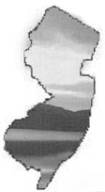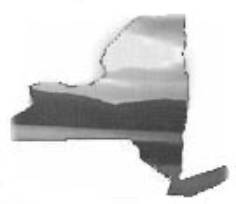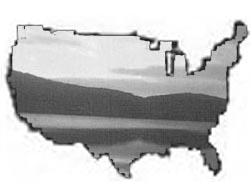Development Tools
SMART GROWTH
PUBLIC/PRIVATE FUNDING
Smart Growth policies are concerned with both the pieces and the whole. The elements are far from new, yet they do not suggest we turn our back to modern living. This planning philosophy has analyzed the compositional elements of major urban centers and applied them to a suburban context. Smart Growth envisions a framework whose character and scale does not threaten but rather embraces the community. This approach has received public/private financial funding within three broad categories:
OPEN SPACE GRANTS
HOUSING GRANTS
SMALL BUSINESS GRANT S
OPEN SPACE GRANTS

America the Beautiful Grants
To further the advance of urban forestry in Connecticut. The funds have gone to such diverse projects as tree planting, street tree inventories, tree maintenance programs and the design of tree guidebooks.
EPA-New England's Smart Growth Action Plan
Farm and Ranch Lands Protection Program
Provides funds to purchase the development rights to farmland, preserving productive farmland for agricultural use.
Grassland Reserve Program
Helps landowners restore and protect grassland, pastureland, and shrub land. Can provide assistance for rehabilitating grasslands.
Greenways Small Grants Program (Greenways License Plate Program)
Planning, design, and implementation (including education) of greenway projects around the state. Property acquisition and construction are not eligible for funding. Funds for grants are generated by sales of Greenways License Plates.
Long Island Sound Habitat Restoration (Coves & Embayment Enhancement)
Harry Yamalis - Office of Long Island Sound Programs Phone: (860) 424-3034
Planning, design, and implementation of projects aimed at the restoration of degraded coastal coves and embayments, and tidal wetlands.
National Recreational Trails Program (also known as RTP or Symms Act)
Construction of new trails, maintenance and restoration of existing trails, purchase or lease of equipment, acquisition of trail easements, and developing trail access for people with disabilities.Eligible to be classified as Class I or Class II watershed land (Water Companies only).
Open Space and Watershed Land Acquisition Grant Program
Grants may be for the purchase of land that is:
- Valuable for recreation, forestry, fishing, conservation of wildlife or natural resources;
- A prime natural feature of the state's landscape;
- Habitat for native plant or animal species listed as threatened, endangered or of special concern;
- A relatively undisturbed outstanding example of a native ecological community which is uncommon;
- Important for enhancing and conserving water quality;
- Valuable for preserving local agricultural heritage; or
- Eligible to be classified as Class I or Class II watershed land (Water Companies only)
RCRA Brownfields Prevention Initiative
Superfund Redevelopment Initiative and Pilot Program
Wetlands Reserve Program
Offers an opportunity for landowners to voluntarily protect, restore, and enhance wetlands on their property.
Wildlife Habitat Incentives Program
A voluntary program that provides technical and financial assistance to landowners who want to improve fish and wildlife

American Littoral Society
To advance coastal protection through five campaigns: strengthening strategic direction and planning of coastal management; reforming coastal land use governance; creating sanctuaries; restoring habitats; and protecting and promoting public access.
Association of New Jersey Environmental Commissions
For administering and funding a Smart Growth Assistance small grants program. The program provides up to $25,000 to qualifing municipalities in the Highlands, Pinelands, Delaware Bayshore and Skylands regions for projects based on sound planning principles, including protection of open space and natural resources.
Clean Water Fund
To advance anti-sprawl and smart growth practices in New Jersey as well as to expand the "preventing harm" initiative and Safe School/Safe Home program in urban areas to reduce exposure to toxins, pesticides and contaminants in drinking water.
Green Acres Program
The Green Acres Program in the Department of Environmental Protection has directly purchased or assisted in the preservation of 410,176 acres of open space in New Jersey. Green Acres has made grants and loans to municipal and county governments for open space acquisition and recreational development for the past thirty-eight years. Since 1989, Green Acres also has provided matching grants to nonprofit conservation organizations for open space acquisition.
Grazing Lands Conservation Initiative (GLCI)
The Grazing Lands Conservation Initiative's (GLCI) mission is to provide high quality technical assistance on privately owned grazing lands on a voluntary basis and to increase the awareness of the importance of grazing land resources.
Metropolitan Waterfront Alliance
To support MWA's efforts to bring together organizations and individuals that work to develop a vision of a sustainable New Jersey-New York waterfront, and to energize public officials to become positive agents in this reclamation.
The Land Conservancy of New Jersey
The Conservancy's Partners for Greener Communities program works with municipalities to develop and implement open space plans designed to preserve critical watershed lands.
Natural Lands Trust
For the NLT's South Jersey work, including land protection projects in Salem and Cumberland Counties, management of a preserve system, and programs and actions that deepen connections between human and natural communities.
Nature Rail
To facilitate the design and construction of an urban wilderness park adjacent to the Secaucus Transfer Station, a new commercial railroad and commuter train station being built on the edge of the Hackensack Meadowlands.
New Jersey Audubon Society
For conservation and stewardship initiatives to prevent sprawl through land acquisition, planning, efforts to protect critical habitat for state endangered species (in the Highlands and Pinelands) and a campaign to reverse decline of shorebirds and horseshoe crabs on Delaware Bay.
Open Space Institute, Inc
To support the administration of the New Jersey Conservation Loan Fund established by the Dodge Foundation and OSI to provide bridge loans to conservation groups working to protect open space in NJ's Pine Barrens, Highlands, and Delaware Bay Shore area.
Passaic River Coalition
For continued advocacy on a variety of environmental concerns, particularly the preservation and restoration of the Passaic River, and the protection of open space and clean water throughout the Passic River Watershed.
Preservation New Jersey
For the Heritage Partnership project, which promotes planning for and management of historic sites on publicly preserved land, and the use of historic preservation as a tool for protecting open space and farmland.
Regional Planning Partnership
For the Planning Tools for New Regionalism Project, which will develop and apply methods for creating local plans that are consistent with regional goals and the State Plan. The process includes setting growth limits, choosing transit corridors and protecting watersheds. The project will likely be applied in Mercer County.
Stony Brook - Millstone Watershed Association
To combat sprawl and protect environmental resources by providing comprehensive up-to-date support for municipal officials. This effort combines a formal assessment process to compare local zoning and ordinances to the master plan and a community vision with an interactive website that will allow the public to visualize the future of their communities.

The Forest Land Enhancement Program (FLEP)
Administered by the NYS Dept of Environmental Conservation, is an innovative state-federal partnership that will provide educational, technical and financial assistance to promote active stewardship of private forest resources.
Hudson River Valley Greenway Grants & Funding
The projects grants program has provided funding for trail planning, construction and amenities, historic landscape preservation, regional and local partnerships as well as many other resource enhancement and economic development projects.
Grow New York's Enterprise Program
The Grow NY Enterprise Program is a joint Governor's initiative of the Governor's Office for Small Cities (GOSC), Empire State Development Corporation (ESDC) and the Department of Agriculture and Markets (NYSDAM), which dedicates $3 million annually to increasing the demand for and expanding the use of New York's agriculture and forest products. The primary objective of the program is to provide funds to local governments who in turn use the dollars to assist qualifying businesses who undertake activities resulting in the creation of job opportunities for low- and moderate-income persons.
Land and Water Conservation Fund Program
A matching grant program for the acquisition, development and/or rehabilitation of outdoor park and recreation facilities. Funds are available to municipal public agencies and Indian tribal governments. Funded projects must reflect the priorities established in SCORP and be available to the general public. Source of funds: The National Park Service.
Land Conservation Transaction Grants
Provides up to $10,000 for projects that enable land trusts to protect and steward environmentally significant lands in New York.
New York Land Trust Staffing Grants
Provides between $10,000 and $50,000 to enable land trusts with fewer than 4 Full-Time Equivalent employees to hire staff or to expand an existing part-time position to full-time. The purpose of the Staffing Grants is to transform all-volunteer land trusts into sustainable, professionally staffed organizations and to provide under-staffed land trusts with expanded capacity, enabling them to become more effective in achieving their land conservation mission.
New York State Environmental Protection Fund (EPF)
Since 1995, the EPF has provided to help protect New York's natural resources and public health, improve environmental infrastructure and expand opportunities to enjoy the state's natural, cultural and historic assets.
Park Program
A matching grant program for the acquisition and/or development of parks and recreational facilities and for the protection of open space. Funds may be awarded to indoor or outdoor projects and must reflect the priorities established in the NY Statewide Comprehensive Outdoor Recreation Plan (SCORP).
Recreational Trails Program
A matching grant program for the acquisition, development, rehabilitation and maintenance of trails and trail-related projects. Funds are available to non-profit organizations, municipal, state and federal agencies, Indian tribal governments and other public agencies and authorities. Funded projects must be identified in, or further a specific goal of, the SCORP and must be available to the general public. Source of funds: Federal Highway Administration.
Wetland Program Development Grants (WPDG)
The Wetland Program Development Grants awarded by EPA Region 2 provide states, tribes, local governments, interstate associations, intertribal consortia, and universities that are chartered as part of State government an opportunity, through funding awards, to carry out projects to develop and refine, but not operate, comprehensive wetland programs.

Environmental Protection Agency
Natural Resources Conservation Service
HOUSING GRANTS

The Community Builders
The Community Builders is a nonprofit affordable housing developer with an extensive region-wide track record. The mission of The Community Builders is to build and sustain strong communities where people of all incomes can achieve their full potential.
